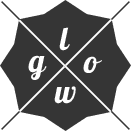FAIRLOP OAK
A Great Oak stood in Hainault Forest on Fairlop Plain about three miles from Ilford. The trunk measured over 20 metres in girth and 6.7 metres in diameter and had a hollow recess where six or seven cattle would seek shelter on hot days. Most of the 17 branches measured at least 3.6 metres in girth. With the sun at its highest the shadow cast covered ground about the size of 2 football pitches. The tree was reckoned to be over 1,800 years old.
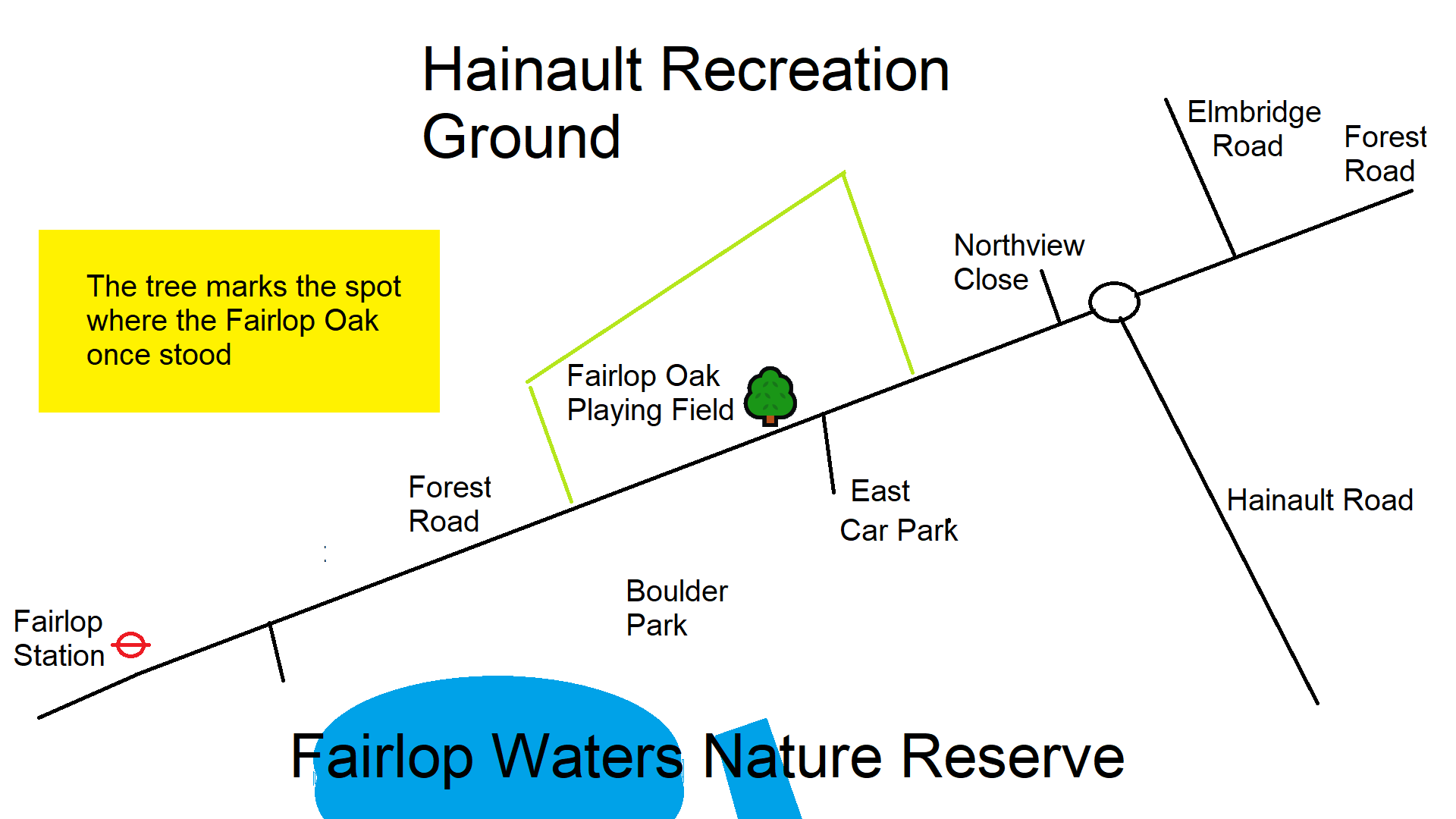
This map shows where the Fairlop Oak stood. Another oak has since been planted in the same position along Forest Road at the edge of 'Fairlop Oak Playing Field.
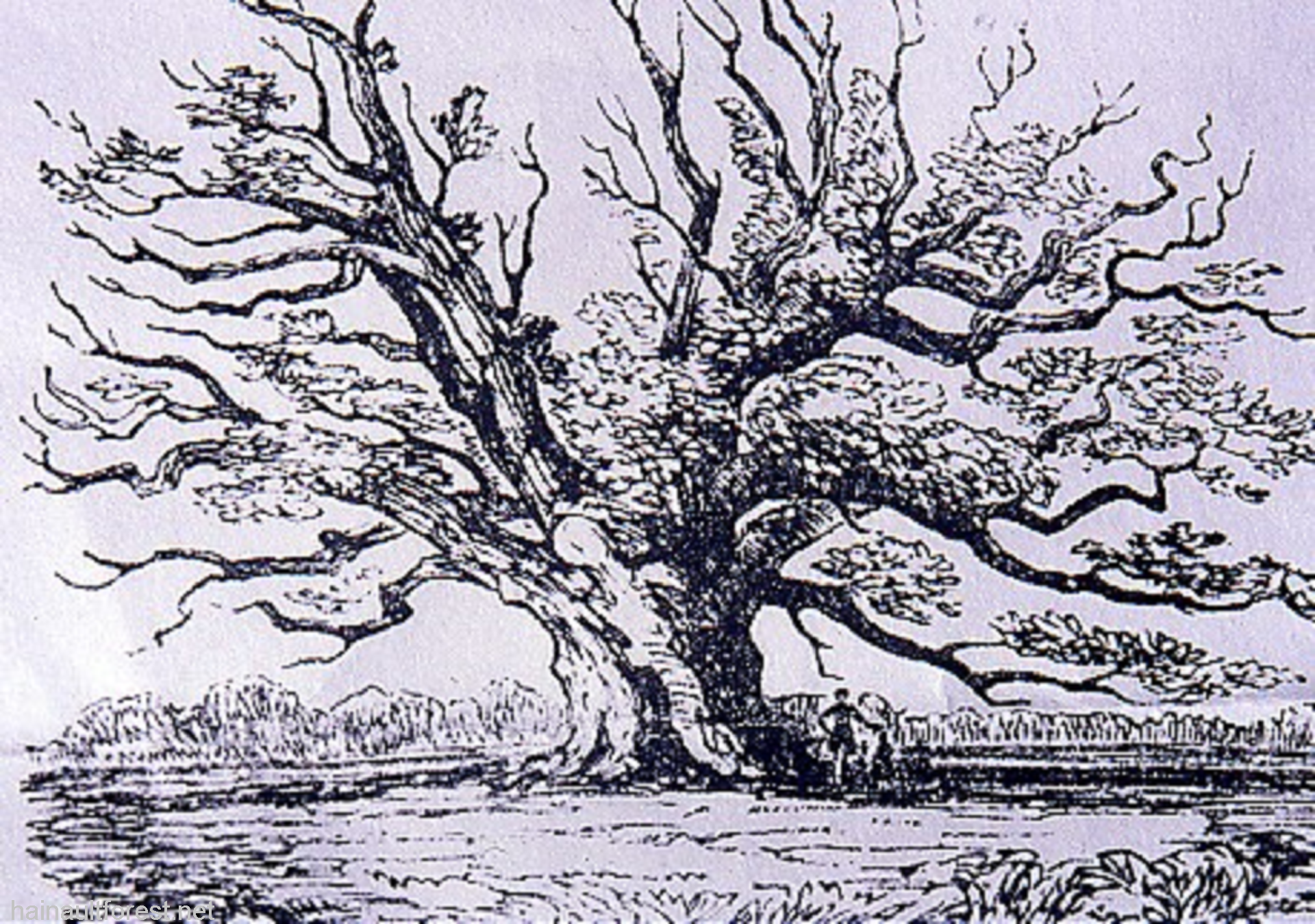
1790. Fairlop Oak.
Queen Anne (1702-14) reputedly visited Fairlop Oak. A song sheet issued at the Fairlop Fair has a song called "Come, come my boys" in which one of the verses states:
“To Hainault Forest Queen Anne did ride,
And saw the old oak standing by her side,
And as she looked at it from bottom to top,
She said to her Court, it should be at Fairlop.
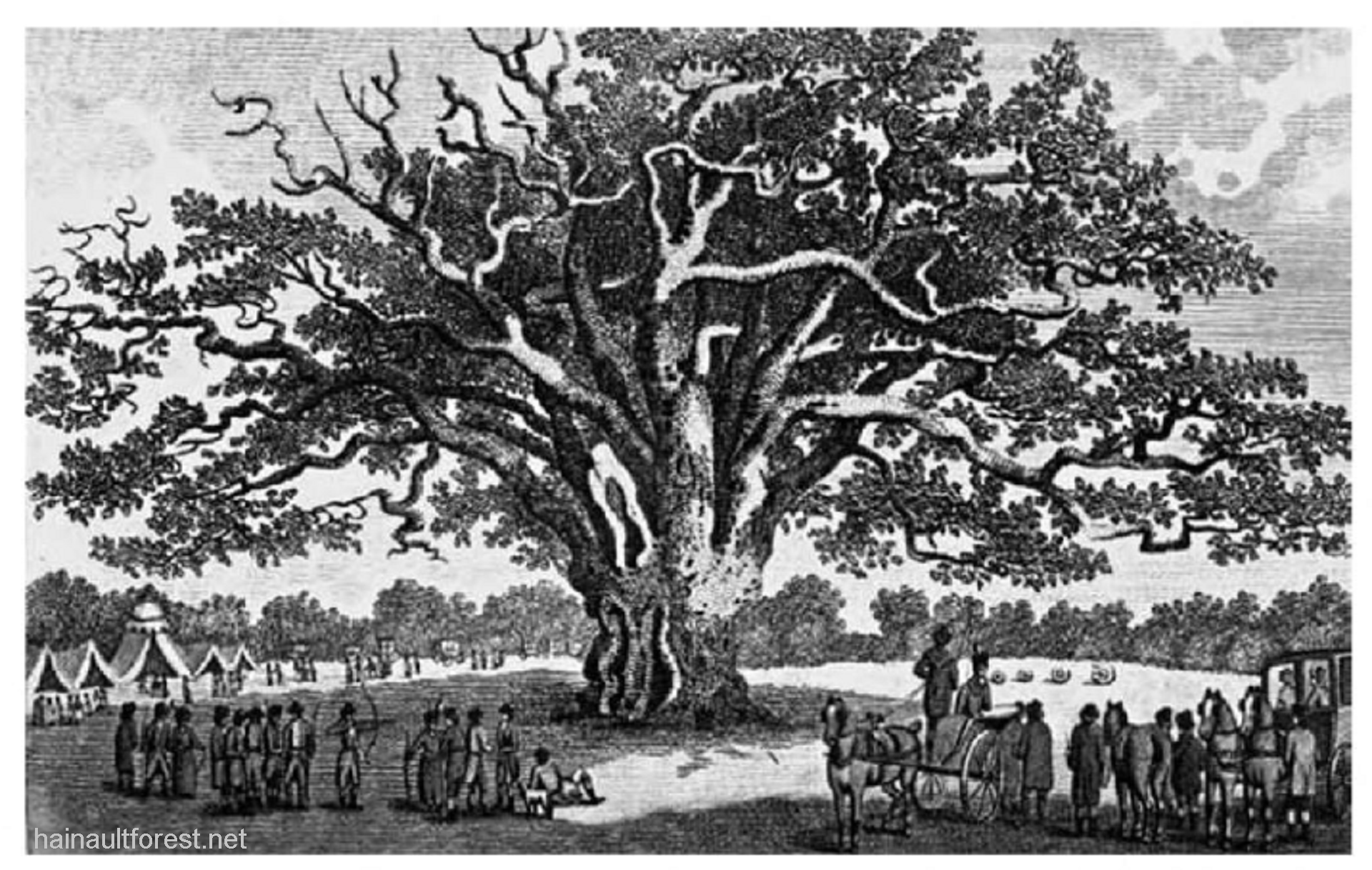
1794. Fairlop Oak with a meeting of Hainault Foresters.
Hainault Foresters, an archery group, consisting of principle ladies and gentlemen of the county, adopted the Oak as a meeting place. The tree's welfare suffered due to the number of visitors now attending the site and tall paling was placed around the tree to offer some protection against those who kindled fires against the trunk. Tree surgeon. Mr. Phillips, applied Mr. Forsyth's composition (cow dung, lime, wood ashes and sand) to the injured parts in the hope it would stimulate new growth. A board placed on the tree said: "All good foresters are requested not to hurt this old tree, a plaster having been lately applied to its wounds."
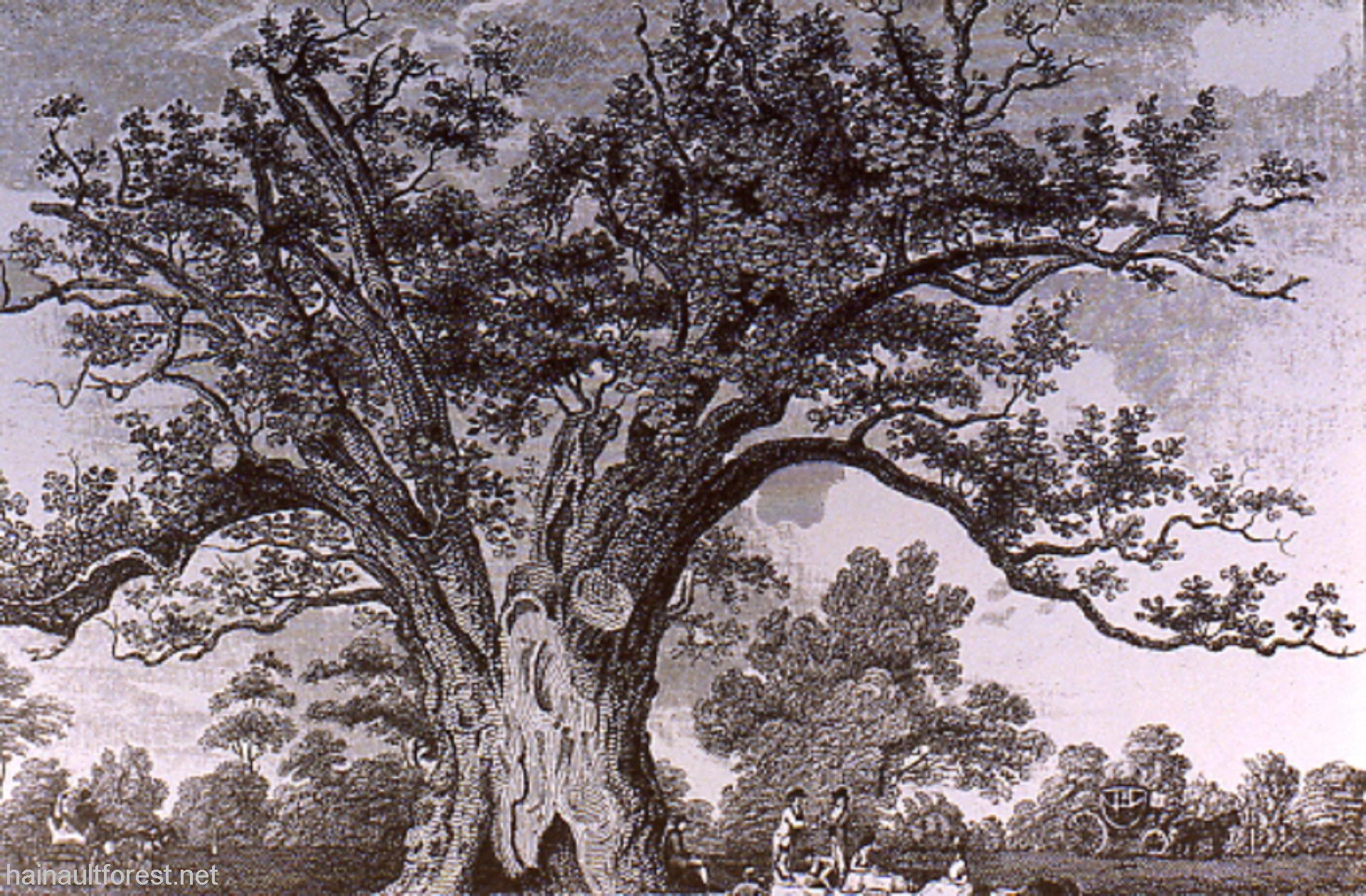
1796. Fairlop Oak

1800. An archer has shot a fallow buck. Engraving possibly by C or G. Trent.
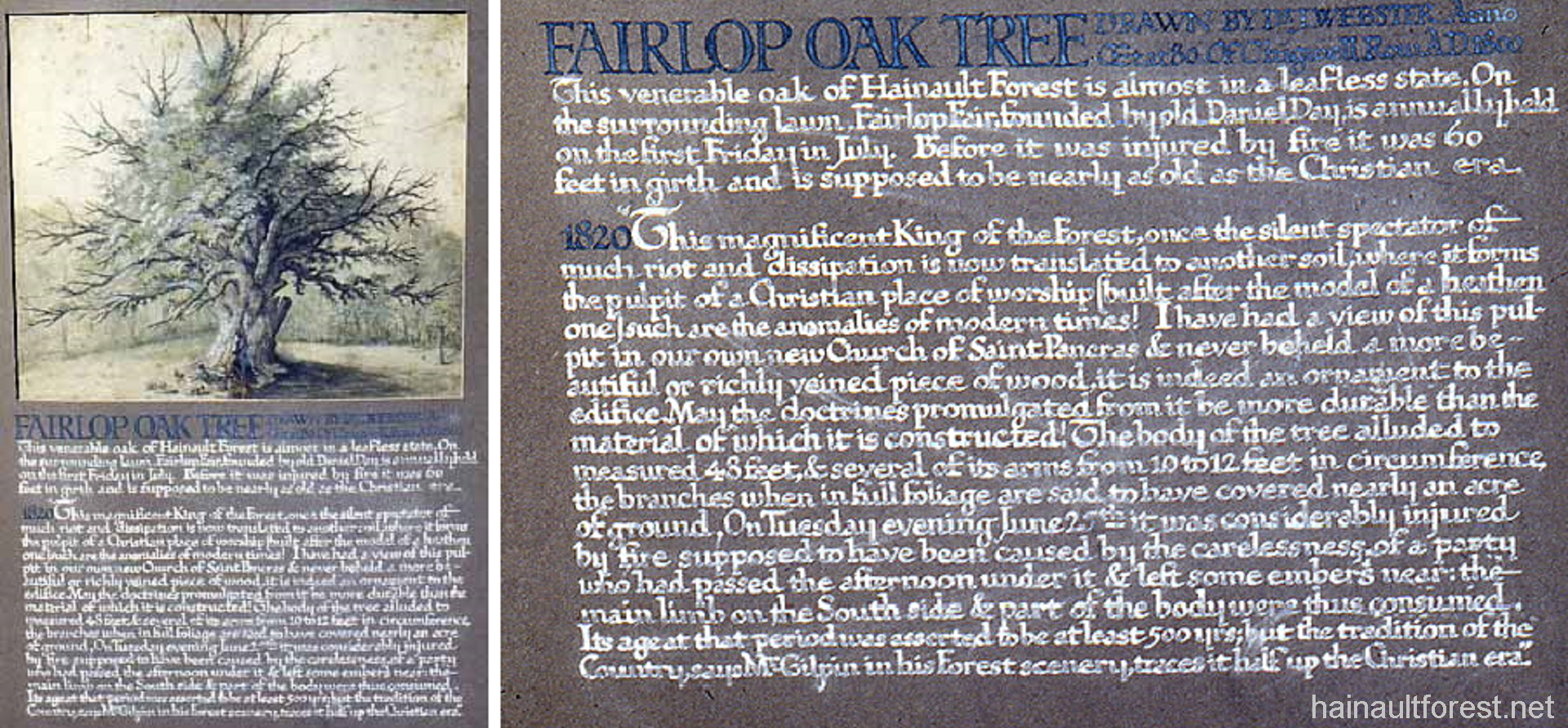
1800. Fairlop Oak. This pastel drawing was placed in St Pancras Church during 1820. The text states the Fairlop Oak Tree was drawn by [?] Webster Anno Œtat [aged] 80 Of Chigwell Row, AD 1800.
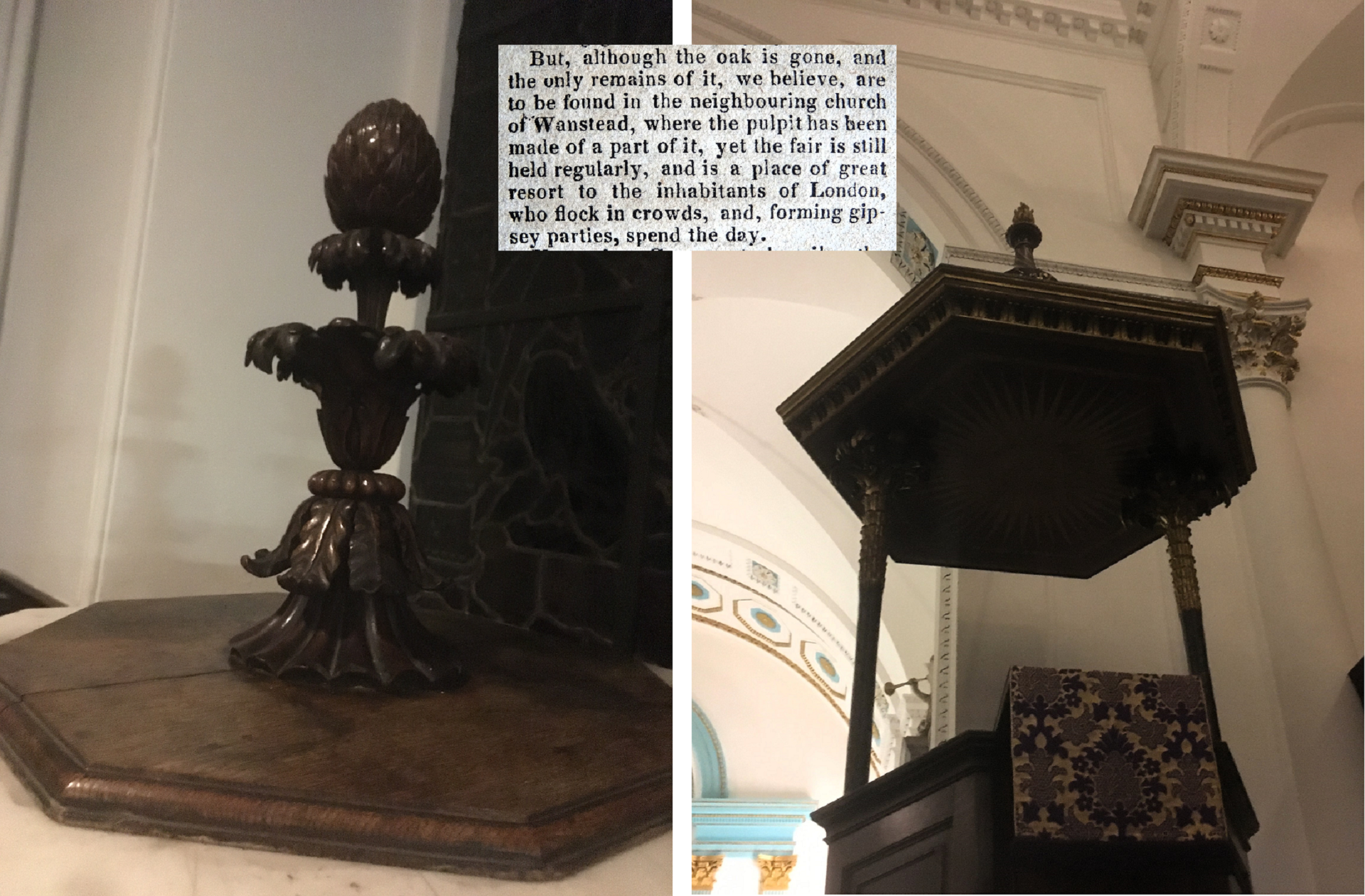
Pictures: © Churchwarden Avril Carnelley
In 1823 The Mirror reported that part of the wood taken from the Fairlop Oak was used to make a pulpit in Wanstead Church. A different newspaper also mentioned a sounding board being made. Denis Keeling, the authority on St Mary's church, said that as far as he is aware the sounding board on the pulpit is original, it was removed at one time and used as a vestry table but was replaced probably around the turn of the last century. He understands that the finial was lost and a new one was made, however the original was then discovered. A shopkeeper in The High Street had it, he knew what it was but was unaware that it was being sought. He returned it and it is now on the top of the font cover. The font cover could possibly be made from the oak tree, although there is no known evidence to support this. The church was built before 1823 so wood from the oak cannot be part of the original fittings.
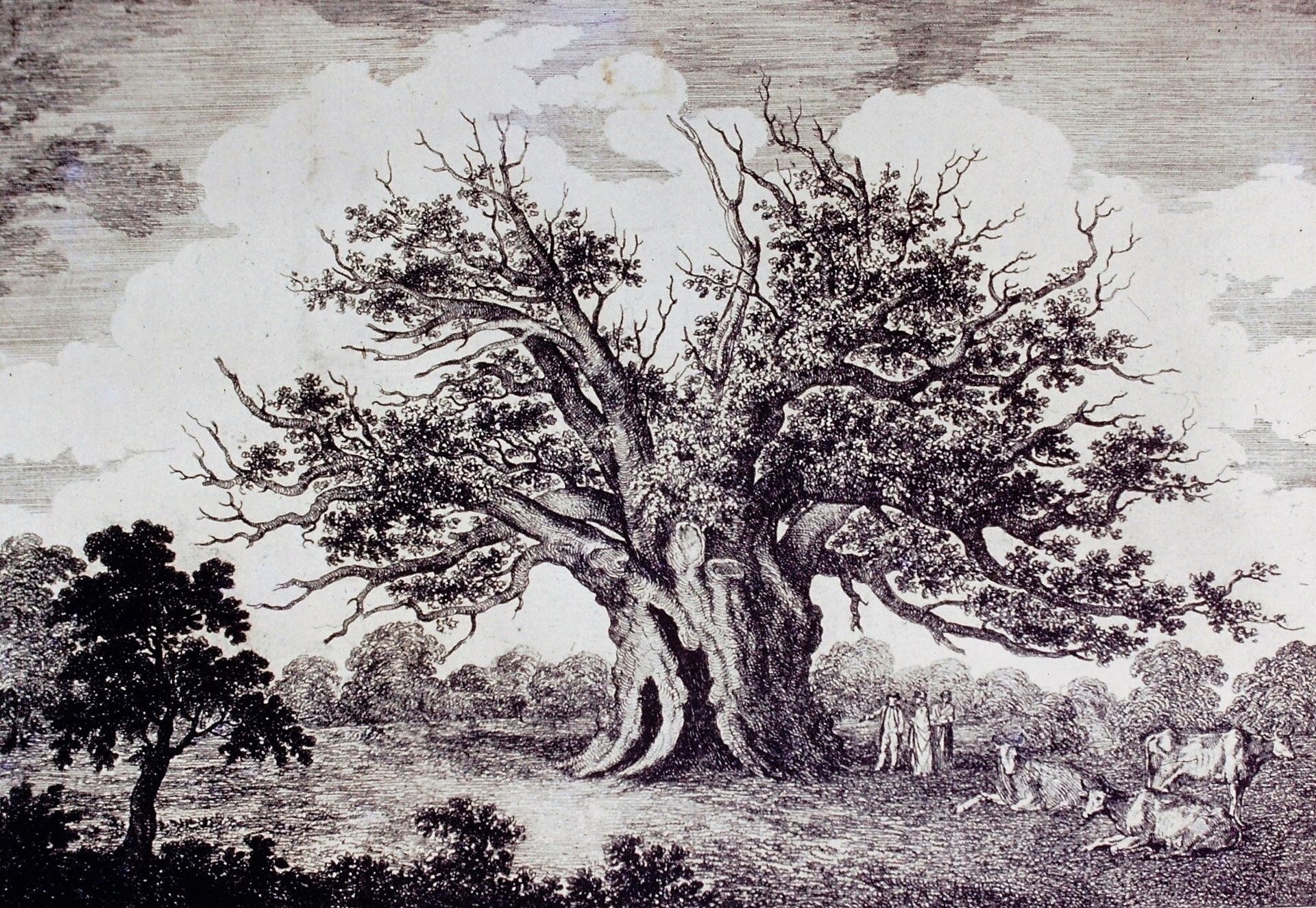
1801. Fairlop Oak
"Fairlop Oak situate in the Henault District of Epping Forrest where a Fair is held on the first Friday in July. The view was taken before the Tree was lopped by Mr. Forsyth, Published according to Act of Parliament July 3, 1801." [Text that accompanied the above picture]
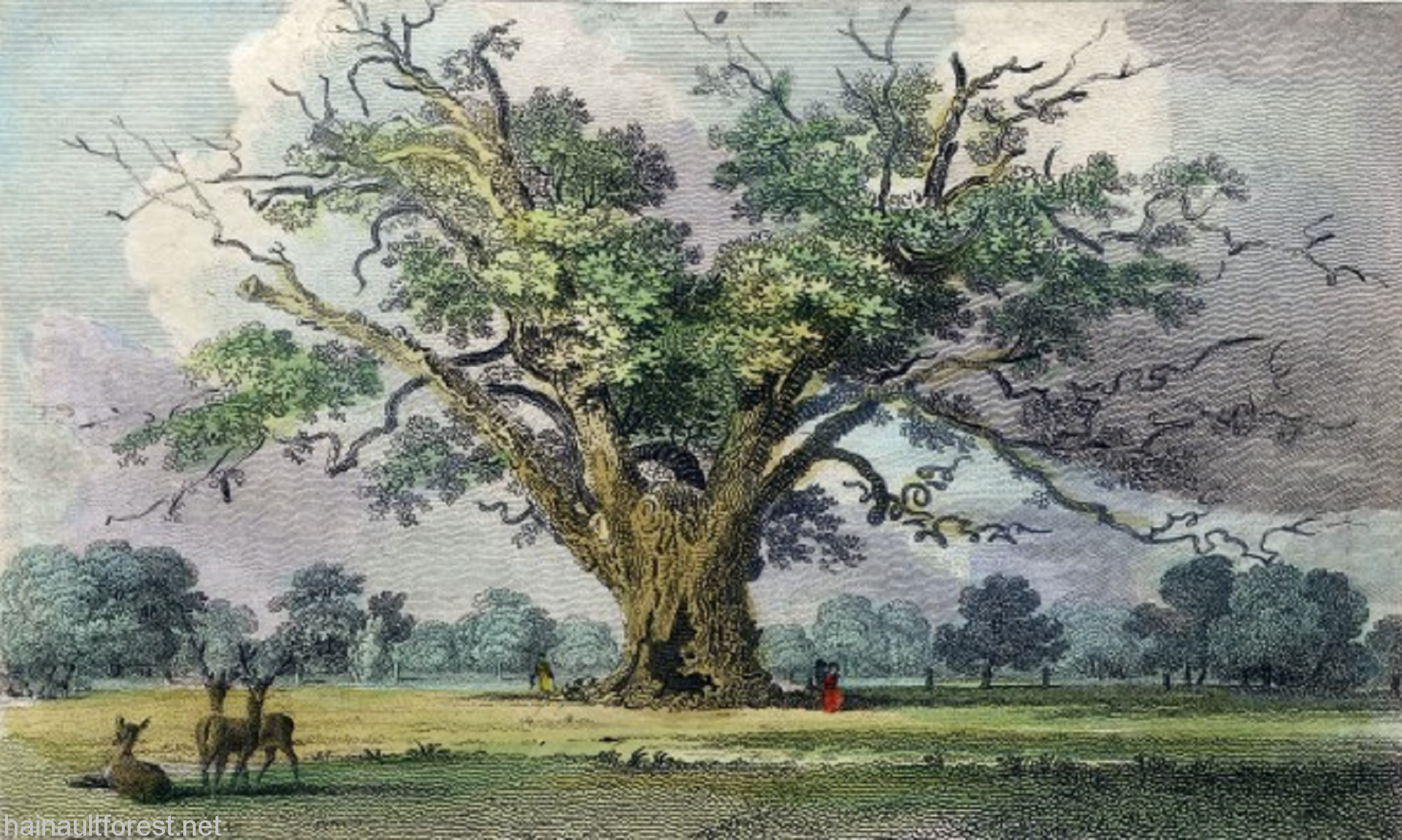
1802. View of Fairlop Oak on Epping Forest drawn and engraved by S. Rawle.
1805. "In June, 1805, this tree received great damage from fire, either by a party who had been regaling under its branches, or from gypsies; it was discovered by the sparks to be on fire, and was with difficulty extinguished: the main branch on the south side, with part of the body, was consumed." [Text from Elizabeth Ogbourne's The History of Essex 1814]
A scrapbook at Vestry House Museum claims the story of the oak burning is untrue: "...is not only hoax from a ficticious branch, but it has not root, nor the least shade of truth; it therefore proves how easily the town are twigged."
If the tree didn't burn why would someone make up a story? Many newspapers printed retractions soon after the initial report of a fire.
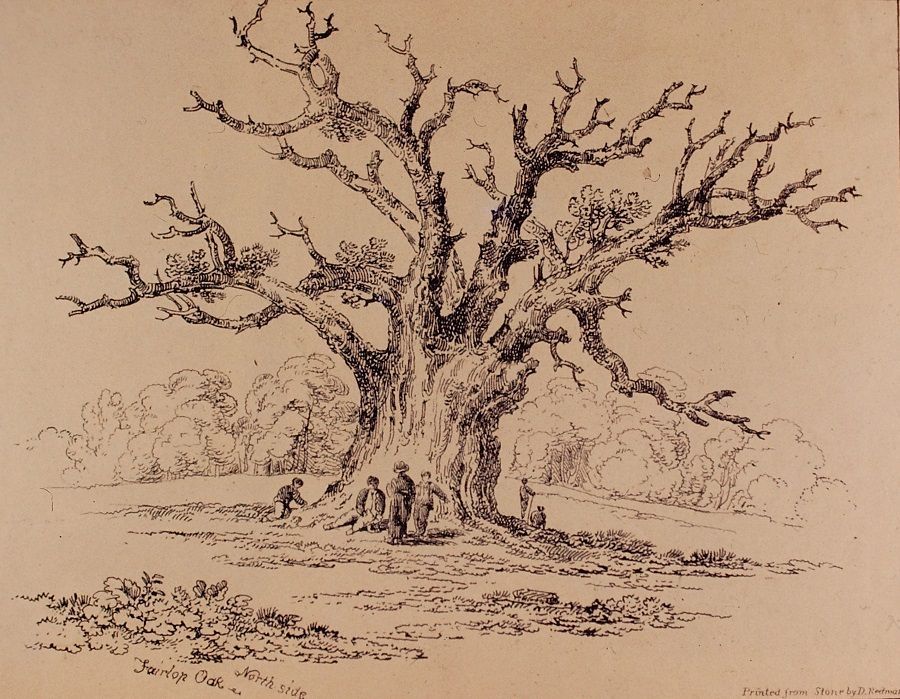
1811. Fairlop Oak. North side.
"This venerable Oak of Hainault Forest in Essex is is almost leafless state. On the surrounding Lawn Fairlop Fair, found Old Daniel Day, is annually kept on the first Friday in July. Before it was injured by fire it was 66 feet in Girth and is supposed to be nearly as old as the Christian era. June 29th 1811. Printed from Stone by D. Redman." [Text that accompanied the above picture]
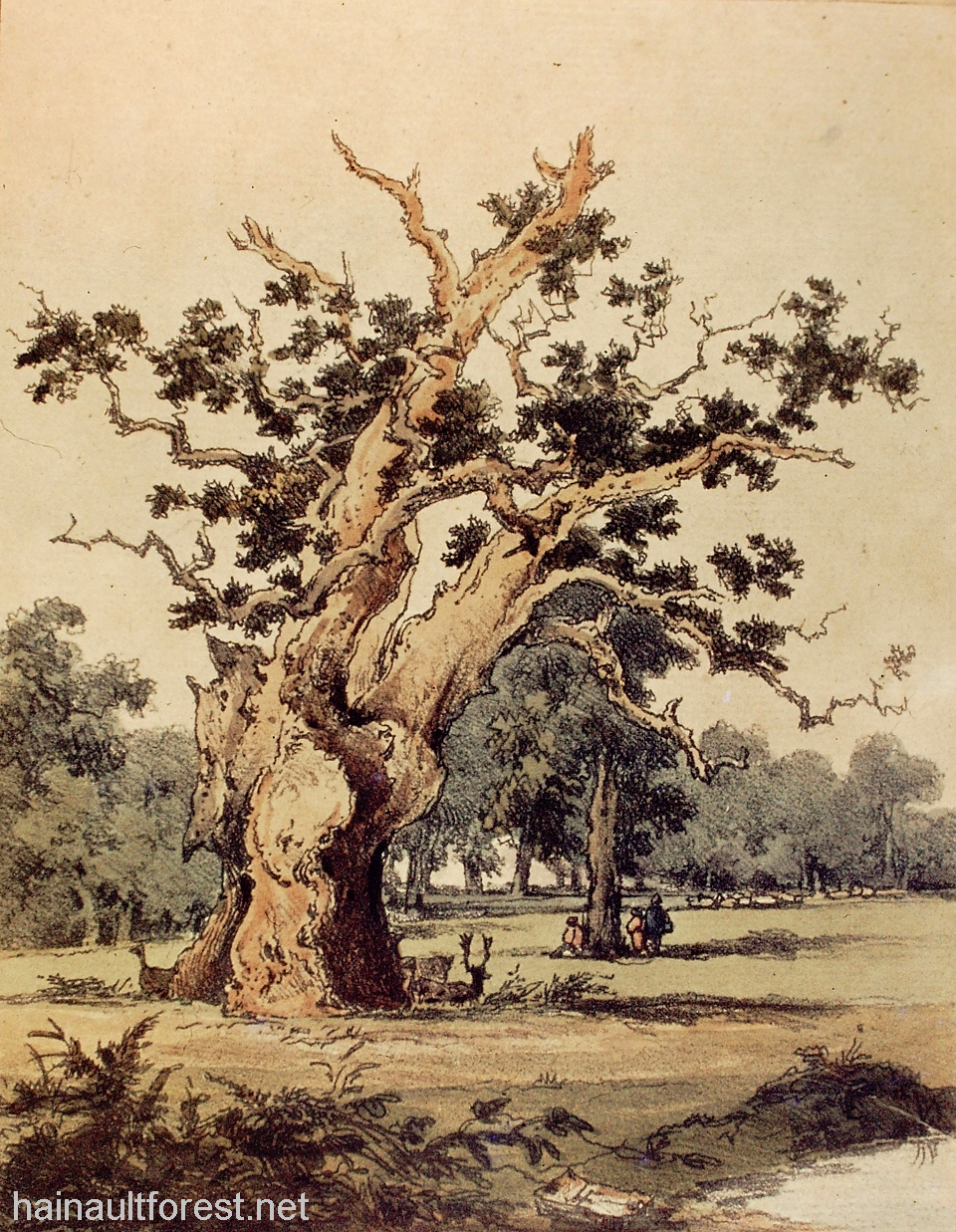
1813. Fairlop Oak.
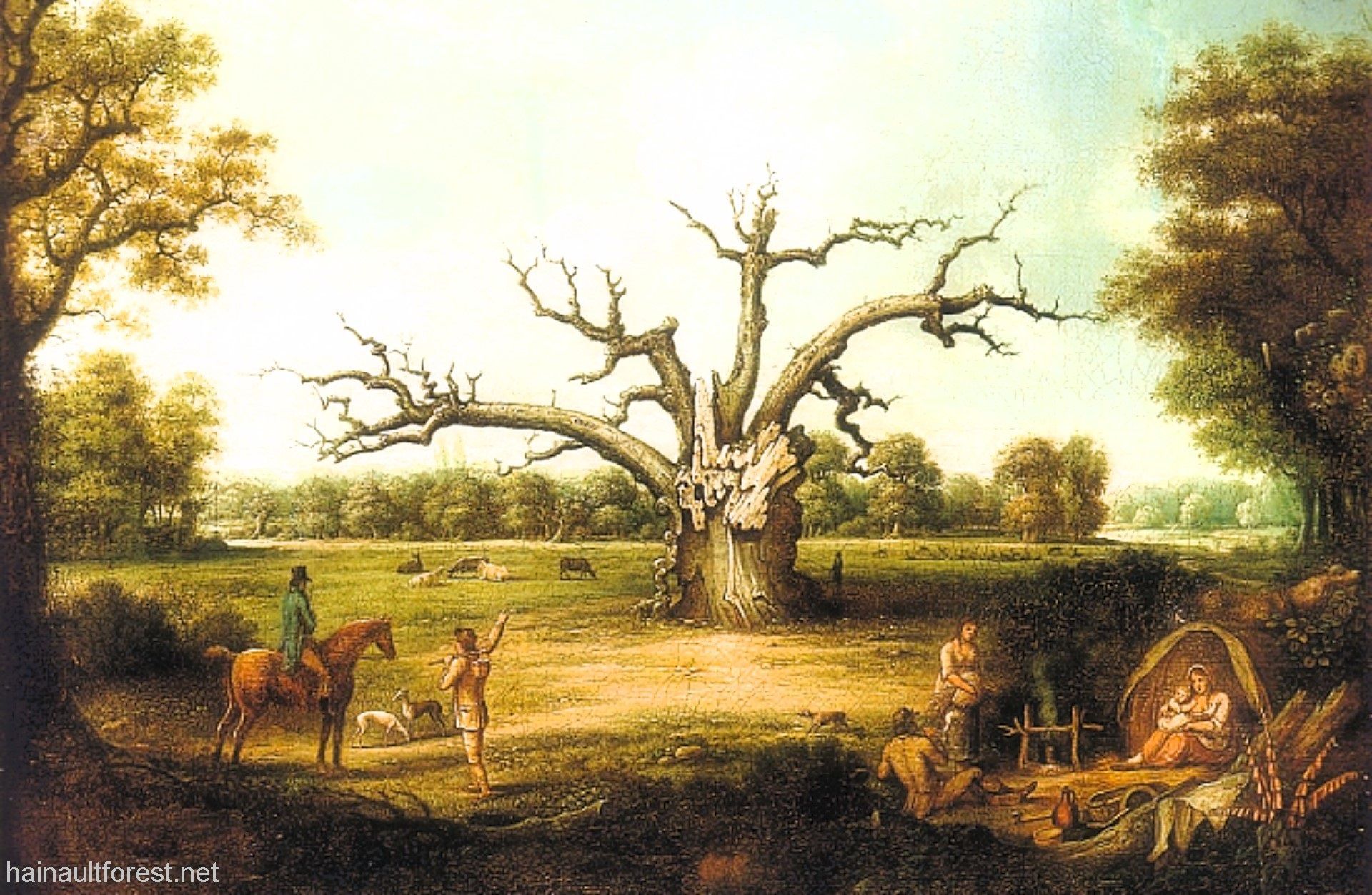
1816. Fairlop Fair by Henry Milbourne (known for his Countryside Landscapes). The picture is in the Museum of London.
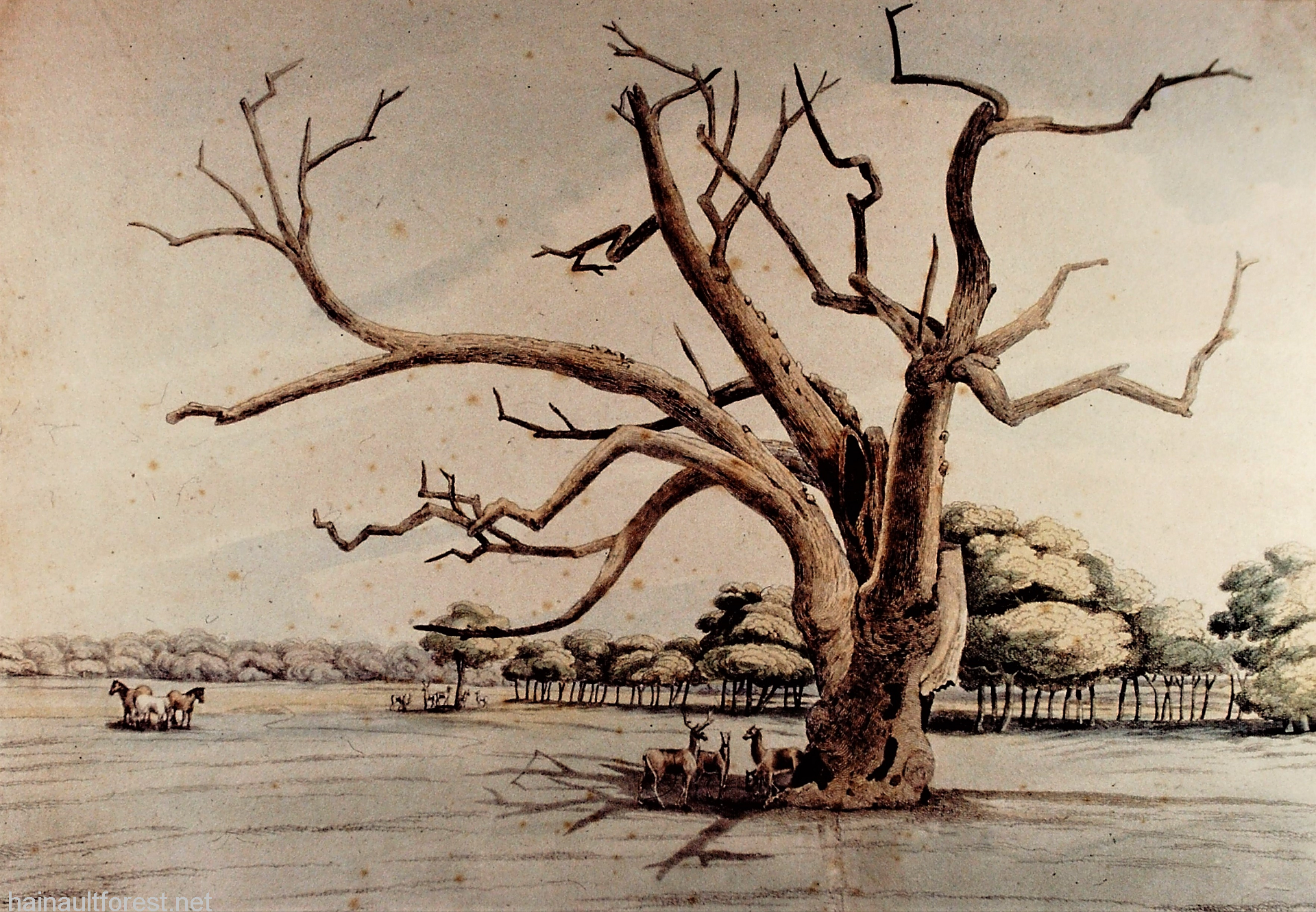
1820. Fairlop Oak by Remington.
Gales in February 1820 sent the Fairlop Oak crashing to the ground but that didn't stop it being mentioned in papers and magazines...
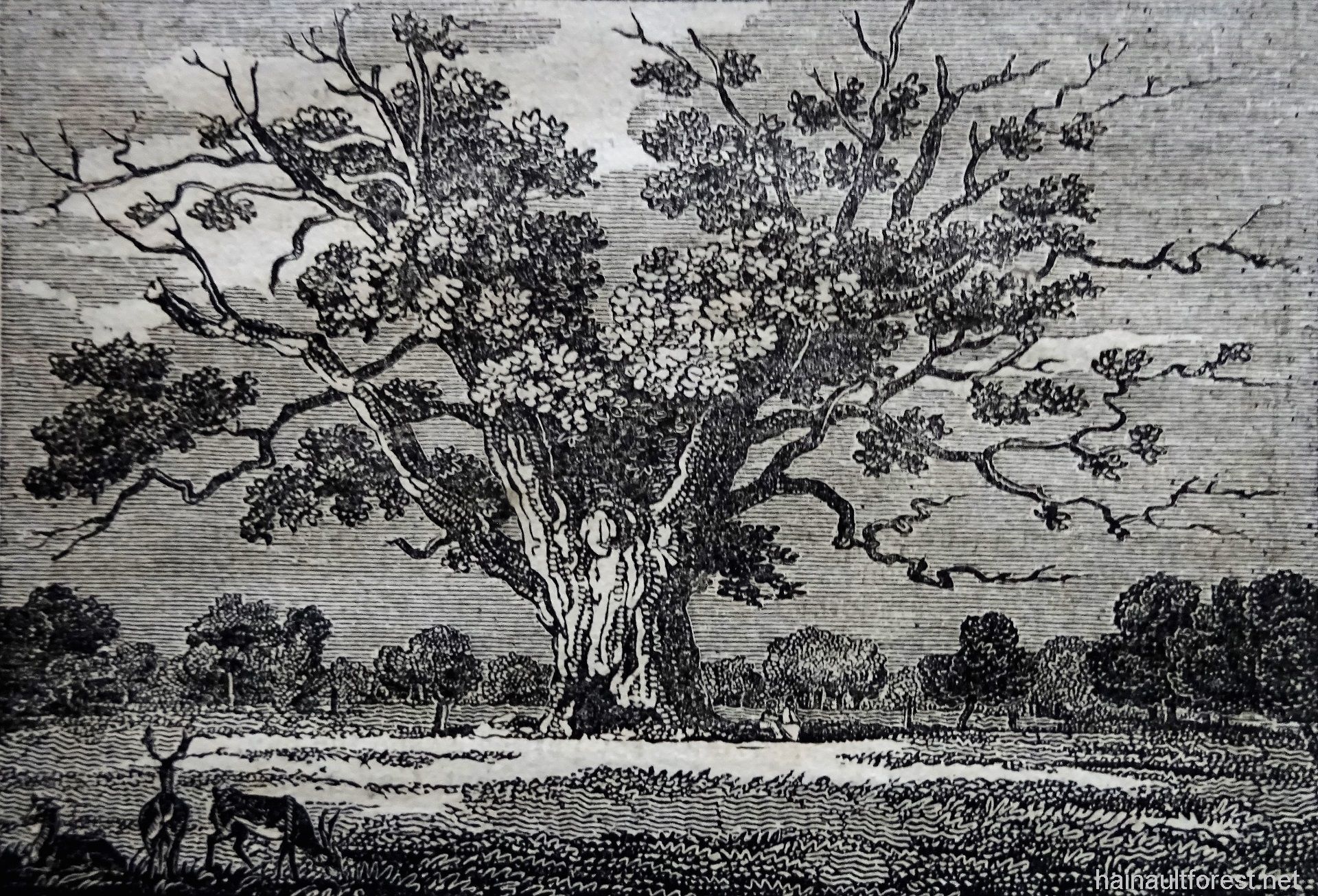
1823. Picture from The Mirror.
1825. The Monthly Repository printed "APOSTROPHE TO FAIRLOP OAK by R.H.H.
REANIMATOR of dead years,
Forgotten-gone-
Who callest up their long arrears!
And back they're flown!
Too stern art thou for human tears,
Whate'er be shown!
For in thine old and iron power
Thou hold'st an empire o'er the hour,
Tho' scath'd and batter'd by the blast
Of elements, for ages past,
Rock-like thou stand'st, and gaunt to see,
The scorn of Time - Time scorn'd by thee!
*As this Noah of trees is now no more, it may be said that the last line becomes subject to the moral of 'beware of presumption.' Perhaps so, but it happens prematurely. The grand old oak had not fair play. It was not destroyed by the elements, or by age. A parcel of fellows, with the souls of toymen, cut it down to make waggon loads of snuff-boxes. Fine sound wood!"
1833. The Gentlemen's Magazine described a cricketer with: "Stand up, Tom Walker! show thy scraggy frame, thy apple-john face, thy spider legs, thick at the ankles as at the hips, thy knuckles like the bark of the Hainault oak!"
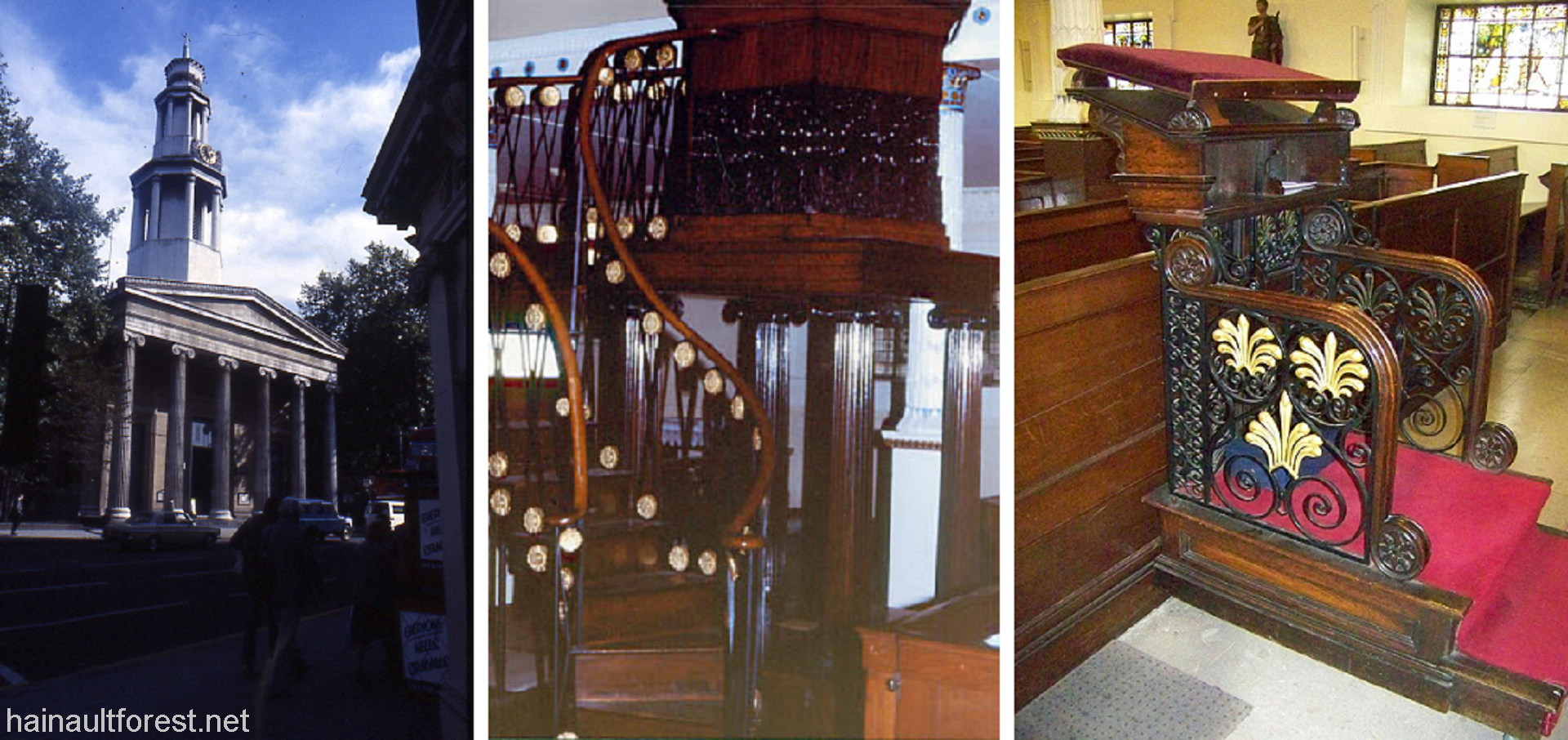
St. Pancras Church, pulpit and reading desk. Pictures © Brian Ecott
Oak timber was a valuable commodity and part of the Fairlop Oak still exists today. Portions of the tree were purchased by a Mr. Seabrooke builder of St. Pancras Church in Euston Road, London. The Church was consecrated in 1820. Inside it contains an ornate pulpit and reading desk made from the Fairlop Oak's timber.
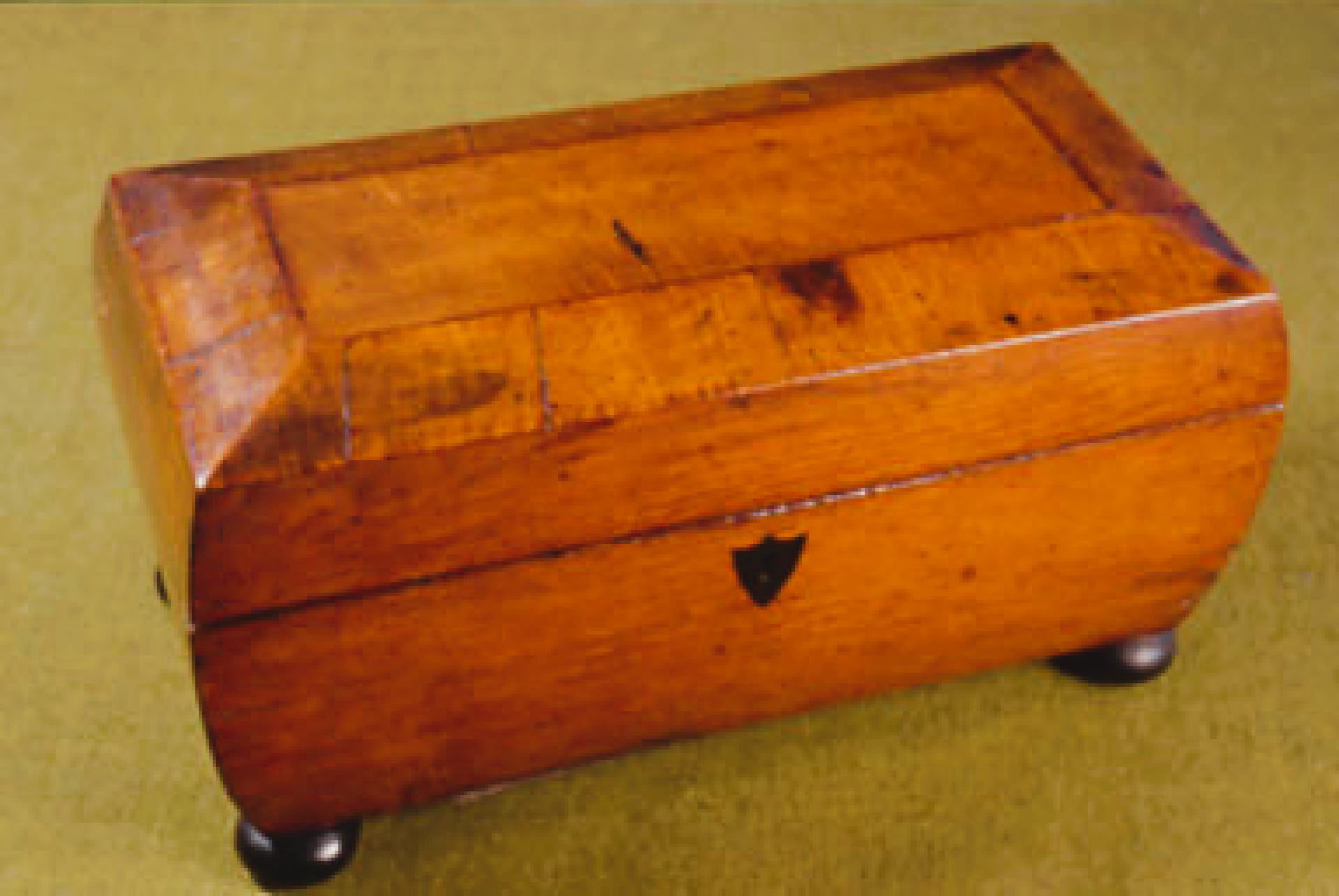
Tea caddy made from The Fairlop Oak [Essex Field Club Collection]

A small box inscribed "A gift of Mr Peel to Mr Hemingway 1834. Cut out of the old Oak." Mr Hemmingway could possibly be the singer that accompanied the Fairlop Frigate to Fairlop Fair. His name appears on the song sheets distributed at the time. Photo: Courtesy of Redbridge Museum.

Small pedestal table belonging to a private collector. The inscription on the column states "Warranted the Celebrated Fairlop Oak". Made by B.Oldacre. Photo: A.G.Credland.

Picture from London's Forests by P.J.S. Perceval
Researched and written by Raymond Small. With thanks for assistance from Brian Ecott, Elaine Wiltshire, Sandra Patchett, Avril Carnelley, Denis Keeling and anyone else that contributed information.
© hainaultforest.net. All rights reserved.
